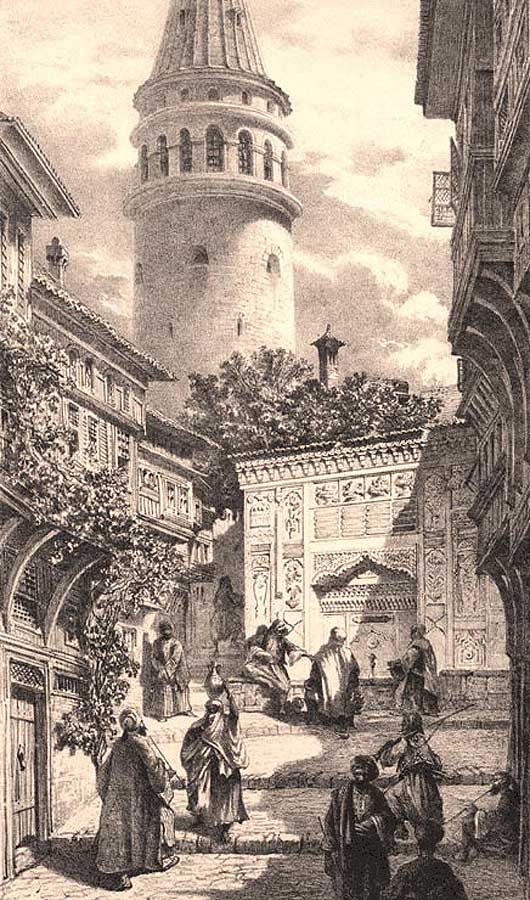|
RUE DE GALATA Constantinople Artist: Eugene Flandin del et lith.____________ Engraver: Imp. Bertauts r Cadet Paris |

PRINT DATE: Unknown. This is a reproduction of the 1850s original lithograph prints by Eugene Flandin extracted from an undated folio, estimated circa 1970-1980. Comes with tissue guard.
We pack properly to protect your item!
BIOGRAPHY OF ARTIST: Eugene Napoleon Flandin, a French artist, was born 1809 in Naples to French parents and died 1876 in Paris. He was a painter of history scenes, genre scenes, portraits, landscapes and urban landscapes. He also worked in watercolor and produced drawings. He was considered an Orientalist. Flandin was the student of Horace Vernet. He accompanied the French Army to Algeria in 1837. In 1840, he was sent on a mission to Perse in order to recover information on the evolution of the country under the reign of Mohammad Chah Qadjar. Accompanied by the architect and painter Pascal Coste, they inventoried the region's ancient and modern monuments. They visited Hamadan, Kirmanshah, Ispahan, then Chiraz, Persepolis, and finally during their return they passed through Mossoul, Alep, and Constantinople. Flandin returned to the Middle East in 1844, this time in Mesopotamia. He exhibited at the Paris Salon, obtaining a second place medal in 1837. He was decorated with the cross of the Legion of Honor in 1842. The early part of his work is imprinted with the themes of the region of his birthplace. He painted views of monuments, landscapes, genre scenes, and portraits. He has a very diverse oeuvre because of his numerous travels. Upon the return from his first voyage to the Middle East he compiled an album of six volumes in collaboration with Pascal Coste. He published another album of his Middle East travels in 1856 in four volumes. His works have been displayed in museums in Auch, Caen, Lille, Marseille, La Roche-sur-Yon, Rouen and Versailles
AN ANTIQUE VIEW OF CONSTANTINOPLE / ISTANBUL / THE ORIENT AS IT WAS 150+ YEARS AGO!
A GREAT OFFICE DEN WALL DECOR GIFT FOR THE WORLD TRAVELLER, OR ARCHITECT DESIGNER WHO APPRECIATES THE BYZANTINE, OTTOMAN, GEONESE ARCHITECTURE OF THIS REGION.